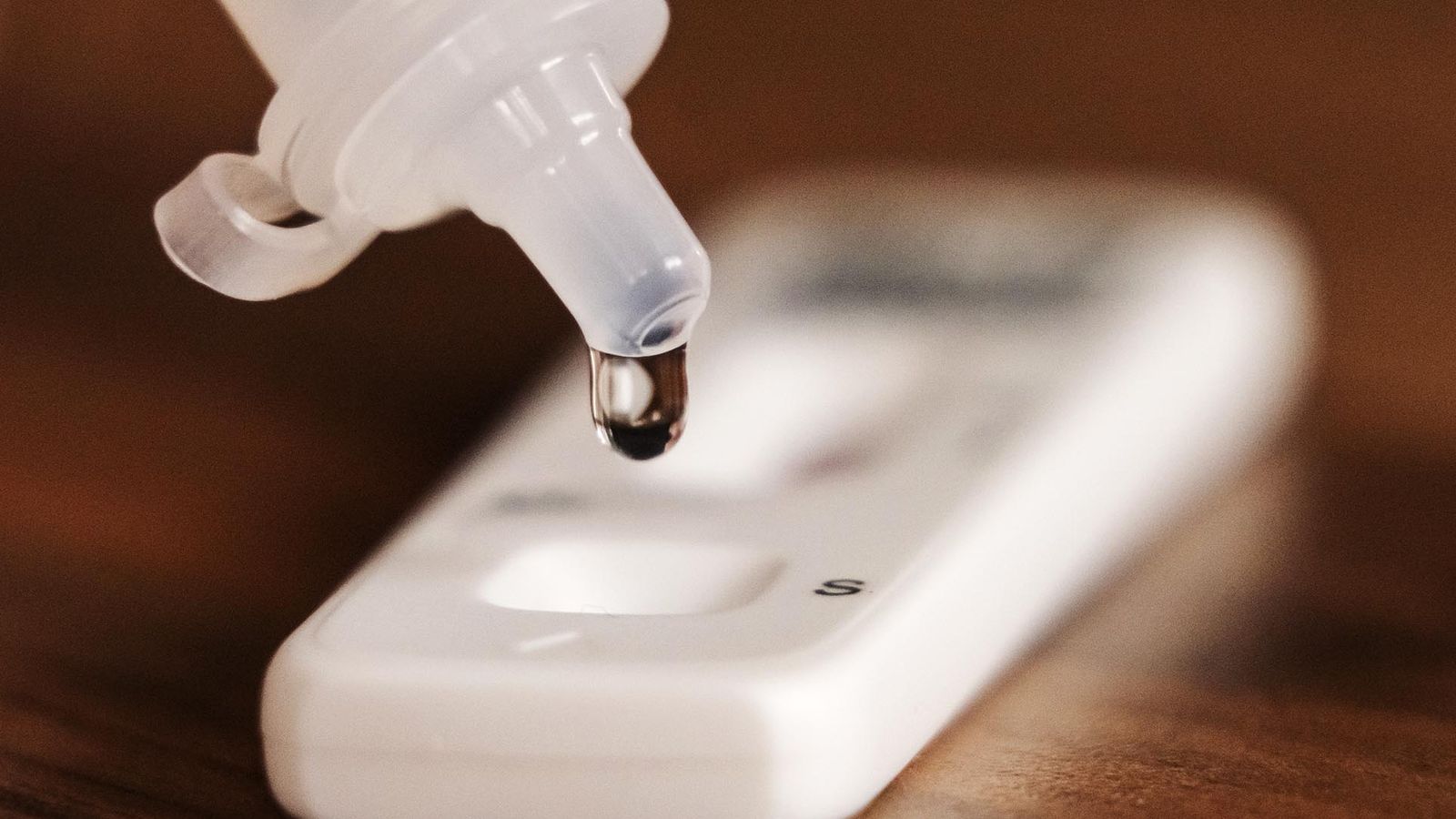The surge in COVID infections has levelled off and may have started to decline, according to the latest official data.
Figures from the Office for National Statistics (ONS) show 4,883,100 people in the UK had the disease in the week to 2 April.
That’s a fall of 0.5% from the week before.
It confirms the trend shown on the COVID dashboard a fortnight ago.
Latest COVID-19 updates from the UK and around the world
The ONS tracks the number of people who have the infection, rather than new cases, so it lags behind the dashboard.
People can still test positive two weeks after being infected.
Spain tells unvaccinated British tourists they are not welcome after rapid U-turn
COVID-19: Risk of blood clot increases for up to six months after having virus study finds
COVID-19: Shanghai eases child separation policy amid COVID lockdown
The data shows 1 in 13 people in England, Wales and Scotland had the infection last week.
In Northern Ireland, the rate was 1 in 16.
Follow the Daily podcast on Apple Podcasts, Google Podcasts, Spotify, Spreaker
That suggests infections are rising in Wales, but are level or falling elsewhere.
There’s no clear trend in different age groups, with infections rising in some but declining in others.
Infection rates continued to rise in the over-70s, up from 6.6% last week to 7.1%, but ONS charts suggest they are levelling off.
The NHS will be relieved the surge may be coming to an end.
Large numbers of people coming into hospitals for treatment of other medical conditions have been testing positive, disrupting services.
Please use Chrome browser for a more accessible video player
Read more: Omicron symptoms less severe than Delta variant, study concludes
High rates of staff absences in all areas of the economy are also causing significant challenges for some businesses.
The surge has been driven by the highly infectious BA.2 variant of Omicron and the lifting of all restrictions.
ONS data shows infections had been rising by between 25% and 30% each week in mid-March, before slowing slightly last week.
BA.2 caused short, sharp spikes in infections in Denmark and the Netherlands, but cases have fallen steeply since because of high rates of immunity.








